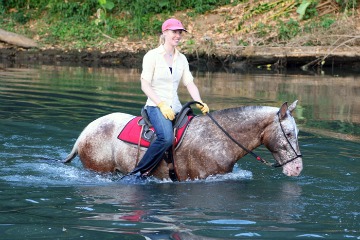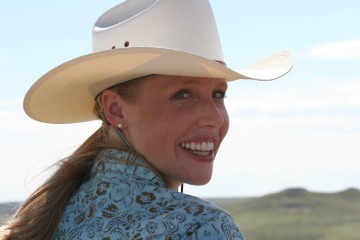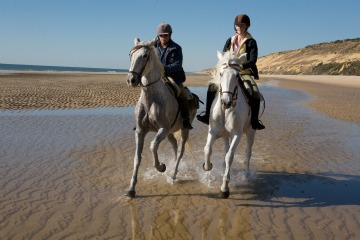As a horseback riding instructor myself, some of the scenes in Equitrekking made me nervous. While watching the Costa Rica episode, I thought, “Nobody is wearing helmets, and half those riders are drunk!”
Have you ever been apprehensive about doing things or riding in a different way than you are used to?

Darley riding in the Platanar River, Costa Rica
It’s a challenge to hop on a horse and just ride off and film in a new area, especially when our entire crew is on horseback in remote locations with expensive film equipment on horses we’ve never ridden. I’ve been apprehensive on many adventures. On most of our film shoots, I don’t have a lot of time to get acquainted with the horse I’ll be riding. I saddle up in alien-feeling tack with people who may or may not understand English, let alone the complications of filming a television show on horseback with a crew, which is also experiencing the same.



